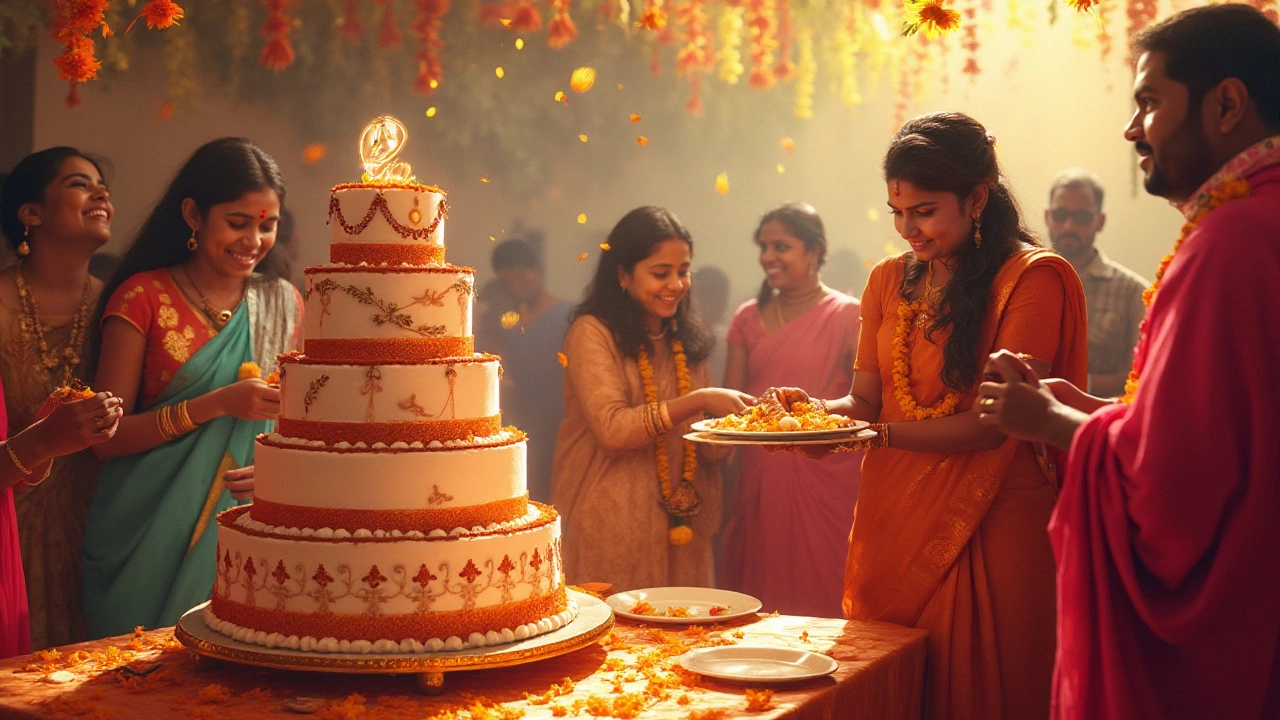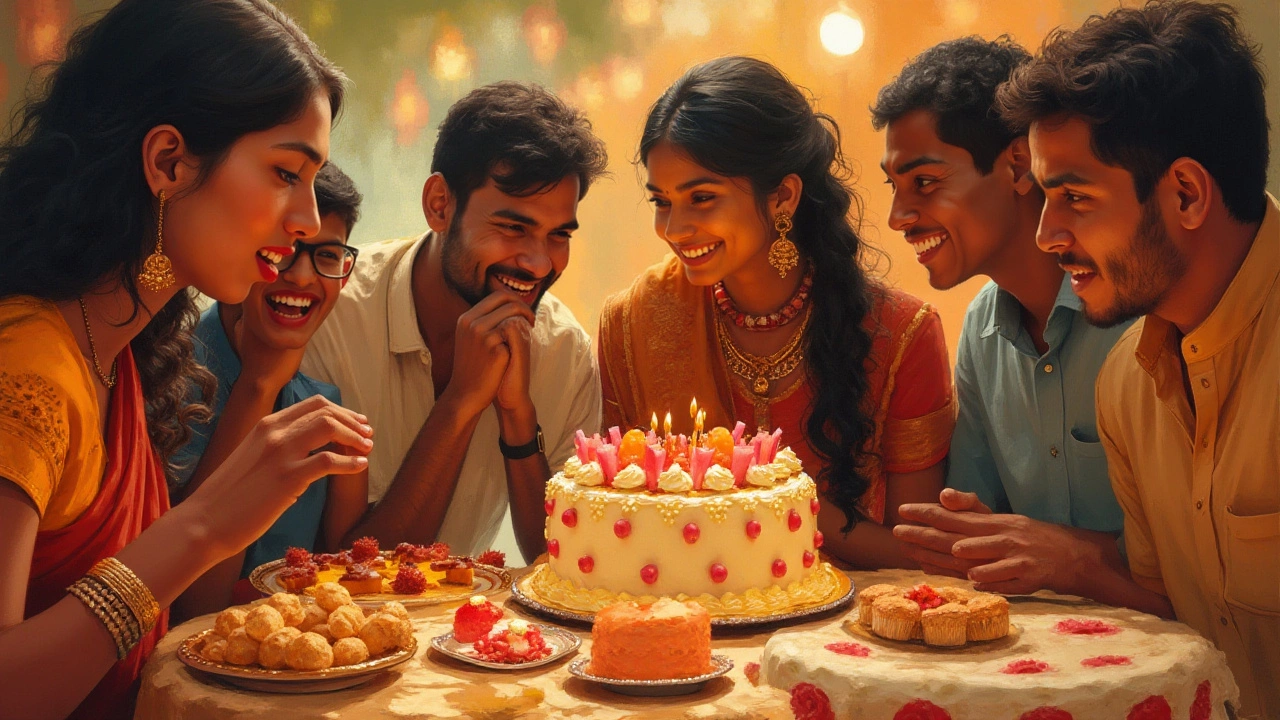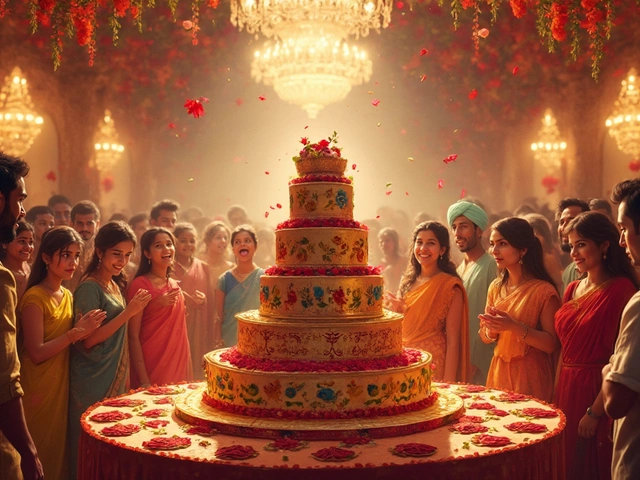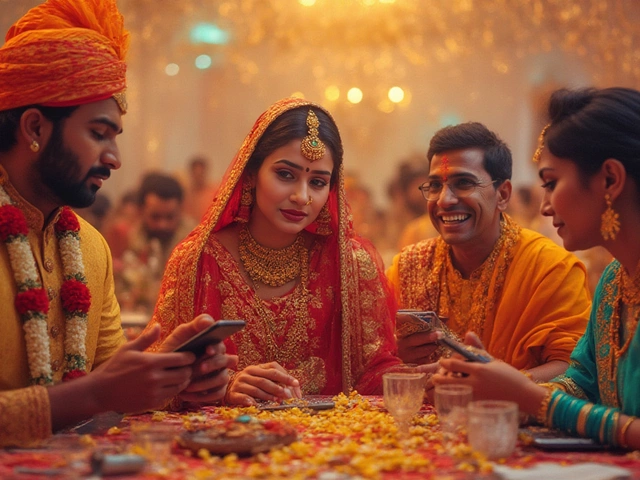
Wedding cakes have long been the extravagant centerpiece of many nuptial celebrations. They are carefully crafted with layers of flavors, intricate designs, and personal touches that speak to the couple's unique journey together. Yet, amidst the grandeur and tradition, a burning question often arises: how many of the invited guests actually partake in tasting this ceremonial confection?
Delving into the habits and preferences of wedding attendees can provide valuable insights for cake makers and couples alike. From understanding trends and guest behaviors to the impact of dietary preferences and lifestyle choices, this exploration offers a delicious slice of knowledge for those keen on mastering this crucial aspect of wedding planning.
- The Tradition of Wedding Cakes
- Guest Preferences and Trends
- Factors Influencing Cake Consumption
- Tips for Cake Makers and Couples
The Tradition of Wedding Cakes
The history of the wedding cake is as rich and layered as the confections themselves. This delectable tradition traces its roots back to ancient Rome, where a simple barley bread was broken over the bride's head to symbolize fertility and good fortune. The crumbs that fell were considered good luck, a sentiment that hinted at the future festivity-filled occasions to come. Over time, wedding cakes evolved into a showcase of wealth and status, burgeoning into the tiers and intricate designs that we recognize today.
As centuries passed, the ritual of the wedding cake began to weave itself into the fabric of matrimonial celebrations across cultures. By the 17th century, it had become customary for a tall, tiered cake to take center stage at receptions in Britain. This tradition was elevated by the wedding of Queen Victoria and Prince Albert in 1840, when their royal cake set a new standard. An exquisite confection adorned with white icing made from refined sugar, the cake birthed what we now call 'royal icing.' Weddings worldwide would soon embrace these lavish representations of joy and commitment.
Of course, the significance of the wedding cake does not rest solely in its ornate presentation. Each layer often carries symbolic meaning—one for the ceremony, another for distribution or preservation, and potentially a third to celebrate anniversaries. These multifaceted confections serve as more than sustenance; they are the icons of hope and happiness. Some even believe that keeping a slice for the first child's christening grants additional blessings. As intricate as these culinary artworks might be, the underlying notion is one of shared joy. Guests partake in this sweetness, reinforcing bonds of friendship and kinship.
Wedding Cake Traditions Around the World
Different cultures add their twist to the wedding cake tradition. In France, the croquembouche—a tower of cream-filled pastry puffs covered in spun sugar—graces wedding tables with architectural flair. In Japan, wedding sweets have moved beyond the cake to elaborate wagashi, echoing the aesthetics of balance and harmony. Meanwhile, in the Middle East, semi-sweet cakes brimming with dates and nuts enrich the palette with heritage flavors. Each variant tells a story unique to the land and its people, making it a cherished cultural artifact.
"Marriage is the golden ring in a chain whose beginning is a glance and whose ending is Eternity." – Kahlil Gibran
The wedding cake remains a cornerstone of culinary creativity, balancing timeless traditions with contemporary flair. As couples seek to express their individuality, cakes are moving beyond customary white and fondant. Artisanal designs and flavors—think matcha, salted caramel, or lemon lavender—have found their way into these once-traditional tiers. From thematic motifs to personalized toppers, cakes now mirror the journey of those they celebrate, poised perfectly at that intersection of history and modernity. It's more than a mere dessert; it’s a testament to enduring love.
Guest Preferences and Trends
The evolution of wedding celebrations over the years has seen significant shifts in guest preferences and trends, particularly when it comes to the iconic wedding cake. While the towering, multi-tiered traditional cake remains a staple in many weddings, today's guests exhibit a wide array of preferences based on dietary habits, cultural influences, and personal tastes. It's fascinating how these changes reflect broader societal trends in more personalized and health-conscious dining experiences. For instance, the growing demand for vegan, gluten-free, and allergen-free options signals a move towards more inclusive catering. Wedding cake makers today are challenged to innovate and adapt their recipes to cater to such diverse tastes.
Another interesting aspect is the preference for variety over quantity. Modern weddings increasingly feature a dessert table alongside the wedding cake, offering guests a delightful assortment of mini-treats such as cupcakes, macarons, and gourmet donuts. This approach not only accommodates different preferences but also enhances the visual appeal of the reception setting. In addition, the rise of cake alternatives, like cheese towers or dessert bars, is noteworthy. Couples see these as offering a unique twist that might better align with their personalities and the overall vibe of their wedding. A study by the Wedding Report in 2022 noted that 15% of couples opted for non-traditional alternatives to the classic wedding cake.
The cultural backdrop of a wedding can also influence cake preferences. Couples from diverse backgrounds may incorporate flavors and elements from their heritage into their wedding cakes, resulting in a fascinating blend of traditions. This fusion can be seen in cakes with exotic fillings or decorations that tell a story or honor a family tradition. As such, cake makers need to be attentive listeners and creative artists, capturing the essence of these narratives in their edible masterpieces. "Modern weddings are truly a kaleidoscope of personal stories told through taste," says renowned pastry chef Claire Ptak in an interview with Wedding Trends Magazine.
Statistics show a rise in smaller, intimate weddings, which naturally affects cake consumption patterns. With fewer attendees, portions are smaller, and extravagant cakes might seem unnecessary. Still, the importance of aesthetics and flavor cannot be overstated. The essence of the wedding cake remains its role as a symbol of unity and celebration, shared among those who gather for this joyous occasion. As preferences and trends continue to evolve, the wedding cake, in whatever form it takes, will undoubtedly remain a cherished element of matrimonial celebrations.

Factors Influencing Cake Consumption
The allure of a beautifully crafted wedding cake is undeniable, a sweet emblem of celebration and togetherness. Yet, the decision of whether guests actually enjoy a slice involves several interesting elements. Firstly, the timing of the cake cutting plays a crucial role. Traditionally, it signifies a delightful transition from the meal to the evening's recreation. When this ritual occurs late into the night, especially after guests have indulged in other desserts, the inclination to savor a slice may lessen. Many modern weddings incorporate dessert tables laden with a variety of sweet temptations—a popular alternative that may draw some attention away from the cake itself.
Another vital influence lies in dietary preferences and restrictions. As society becomes increasingly health-conscious, wedding attendees may shy away from sugary confections, opting for lighter options. Vegan, gluten-free, and low-sugar diets are now common enough that they impact the cake's consumption. A recent survey indicated that approximately 15% of individuals adhere to dietary restrictions that preclude them from enjoying a slice of traditional wedding cake.
Cake design and flavor choices are also significant. Couples now opt for unexpected flavors like lavender or earl gray, seeking to impress and delight. However, these choices may not appeal to everyone, influencing how many guests partake. Familiar and favored flavors like vanilla, chocolate, and red velvet often draw the largest crowd of eager eaters. External presentation—consistent with the wedding's theme—also affects willingness. Few can resist a stunning visual masterpiece, yet simpler designs might prompt fewer guests to sample.
Comfort and convenience are subtle yet pivotal players in this scenario. Cakes with complex layers or elaborate serving requirements may inadvertently predispose some guests towards taking a pass. Ease of access, as well as the efficiency with which slices are served, can heavily determine consumption. Interestingly, personal invitations to partake, done through the couple mingling and encouraging guests to try a piece, have been shown to significantly increase participation.
"The wedding cake is not just dessert; it symbolizes prosperity, good fortune, and fertility, and it is traditionally made with an abundance of the best ingredients available—true nourishment for a happy marriage," expresses renowned pastry chef Claire Ptak.
Eco-conscious choices are yet another factor influencing consumption. Couples increasingly choose sustainably sourced ingredients and eco-friendly cake toppers. Guests often find these thoughtful touches appealing, as they reflect genuine consideration and responsibility, encouraging them to enjoy the cake more meaningfully.
Tips for Cake Makers and Couples
Planning a wedding involves countless details, with the wedding cake occupying a central role both in tradition and design. For cake makers and couples looking to create an unforgettable dessert that truly delights, understanding your audience is essential. One fundamental tip is conducting a sincere conversation about guest preferences and dietary restrictions right at the start. Knowing how many guests might prefer vegan, gluten-free, or sugar-free options can help in creating a cake that caters to all. An inclusive approach not only satisfies guests but also showcases thoughtfulness and care, which can elevate the entire dining experience at the celebration.
Another essential strategy is portion planning. Contrary to the commonly held belief that you must have one slice for each guest, trends suggest modern weddings experience an excess of cake that never leaves the table. Typically, not all guests will indulge in the confection, with many opting instead for other dessert options, often offered as part of a dessert table. It's wise to calculate approximately 75-80% attendance, considering some won't partake due to dietary choices or simply lack of interest. Discussing this with your baker ensures accurate servings and might also save on costs, which, given the rising expenses of wedding planning, is always welcome advice.
The cake cutting itself is steeped in tradition, often momentous and photographed, yet it can affect when and how guests eat the cake. The timing of the cake-cutting ceremony often dictates whether it becomes a featured moment, and subsequently, whether all guests partake in consuming the cake. Having this early in the evening rather than late may encourage more people to try a slice. Additionally, offering a cake flavor test to guests at the party—if feasible—provides the opportunity to cater to various tastes and might just sway some undecided guests to try a piece.
From the baker's perspective, paying attention to visual aesthetics is as vital as the cake’s flavor profile. Our love for sharing pictures can mean that more guests than ever capture and post their dessert on social media. Thus, unique designs and personalized decor not only make for an exquisite centerpiece but also play a role in how guests perceive and decide to eat it. A table well-presented increases the chances that guests will be tempted to sample the cake based on its look alone, a critical element in today’s visually driven society.
Renowned wedding planner Marcy Blum once stated, "A beautiful wedding cake is not about impressing guests with layers for the sake of layers, but rather a reflection of the couple’s story and style." This sentiment highlights the importance of personal touches, not just in design, but in flavor selection.Encouraging couples to incorporate their histories or beloved flavors into design can create a story through flavor and appearance. Whether it’s a nod to a chocolate cake enjoyed on a first date or a cheesecake recipe handed down through generations, these personalizations resonate. When guests understand these connections, they engage more meaningfully, perhaps prompting even cake skeptics to have a taste out of shared joy or curiosity.



Comments
Post Comment